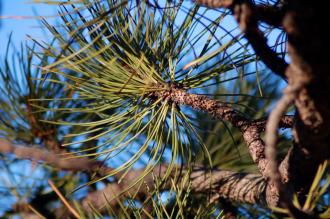News Taffy
| Post Your News Send Us An Event Start A Gallery |  |
| Most Recent | Most Popular | Top Contributors | Galleries | Events |
News Article
 | Contributor: news subscribe to my stories |
 Pine tree and turpentine connection raises questions Pine tree and turpentine connection raises questionsBy Dr. Whit Gibbons Professor Emeritus, University of Georgia and Savannah River Ecology Lab Why would a tree living in a habitat that catches fire every few years produce turpentine, a highly flammable substance? That question was asked as I was building a fire at home with a piece of fat lighter, wood from the stump of a long-dead pine tree. Fat lighter, also known as fatwood, catches fire immediately and burns longer and hotter than the driest wood. With a piece no bigger than a cell phone, you can start a fire without paper. Before you strike a match to burn fat lighter, smell it. Good fat lighter is permeated with turpentine. The turpentine neither harms nor aids the tree while it is alive, becoming of value to it only after the tree dies. This apparent conundrum can be explained by the natural world's extraordinary ability to adapt and evolve. Turpentine, a substance characteristic of pine trees and other conifers, is composed of a mixture of resins and volatile oils. The by-products have been used in a wide variety of applications including caulking for wooden ships, solvent for paint and varnish, and as an ingredient in insecticides, cleaning agents and shoe polish. A great turpentine industry was once centered in the South where pine trees, especially longleaf and slash pine, were tapped for turpentine the way sugar maples are tapped for sap to produce maple syrup. The turpentine industry took advantage of a pine tree's natural response to injury. If the bark is broken, the tree begins to ooze sticky, yellowish sap that eventually dries and seals the wound with a layer of resin. The material is resistant to most wood-eating insects that might further damage the tree. The liquid can be distilled to produce turpentine. But longleaf pines also have a characteristic that makes turpentine production seem counterintuitive. They live in what is known as a fire climax community. This means that, historically, trees and other plants that persisted in a longleaf pine community had to survive natural, periodic fires that swept through the forests, primarily as a result of summer lightning strikes. Some ecologists criticize forest management programs that prescribe controlled burns during winter because natural fires would usually have occurred in summer. Presumably, plants and animals in regions that experienced frequent fires evolved to tolerate warm weather fires. Longleaf pine is a species well-adapted to survive fires at intervals of less than ten years. Young longleaf seedlings, in the so-called grass stage, can be burned back to the ground and then, unharmed, resprout the same season. A larger, more mature tree is also immune to a fast-burning forest fire because its thick bark is resistant to fire and has no turpentine in it. But, why would a pine tree that, under former natural conditions, was sure to be subjected to numerous fires during its lifetime be saturated with readily flammable turpentine? An ecologically harmonious answer is that the turpentine is advantageous to the tree after it dies. Here's how. A pine tree dies, and within a few months or years, after the tree's bark has fallen off, a fire sweeps through the area. The dead tree, especially the stump of fat lighter, burns to the ground. So do any dead needles or limbs that were already on the ground. Nutrients bound inside the dead tree are returned to the soil and once again become available for other pine trees. But animals and plants, including pine trees, are not altruistic, so why would this be of advantage to the tree? The simplest explanation is that most of the nearby trees would be descendants of the burned tree. The tree would be returning the nutrients to its own kin. In addition, adding fuel to the periodic fires would eliminate other trees that are not fire-tolerant species and that might otherwise compete with the pine trees. So there you have it. Pine trees have worked out an efficient and effective mechanism to deal with periodic fires over evolutionary time. The riddle of the turpentine-saturated pine tree is solved. For more information contact the ASU Dept. of Biological Sciences at biology@astate.edu. Dr. Whit Gibbons is Professor Emeritus, University of Georgia and Savannah River Ecology Lab. He was recently invited to speak at ASU as part of the Environmental Sciences seminar series. Dr. Gibbons writes a weekly environmental column that appears in several Southeastern newspapers. [+] add comment |














